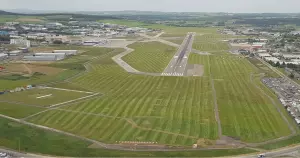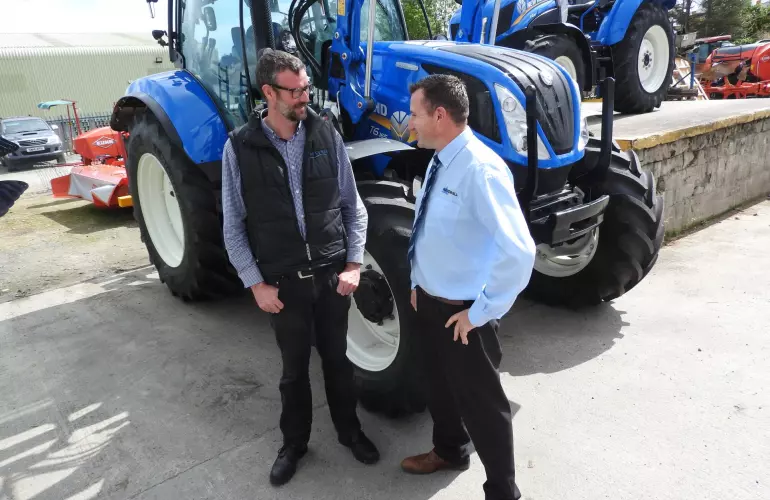
It’s not only the restrictive working hours that apply, or the necessary scrutiny of staff records to ensure adequate airside security, but there are also Civil Aviation Authority (CAA) rules to adhere to determining such details as the precise cutting height of the grass.
Undaunted by such challenges, Aberdeenshire contractor Roy Cowie LBS Ltd successfully tendered for the work at the 256 acre site of Aberdeen International Airport, at Dyce, winning the contract ahead of both national and international competition.
“We offer truly localised services, with everything carried out by our own staff and with our own equipment,” explains Cam Paterson, who – having been with the business for 22 years – typifies the company’s impressive staff retention record. “We were delighted to secure this contract and have been very happy working with the specifications required for this job.”

Although tree surgery in the surrounding areas and some drainage work has already seen the role expand, the primary operation at the airport is to maintain the large areas of grass surrounding the runways and access roads. For this, Roy Cowie not only needed suitable mowing capacity, but also some specialist modifications to the equipment to deliver precisely the right results. The company turned to another local firm, agricultural, groundcare and construction machinery dealer Ravenhill, to provide the support, as Cam Paterson explains.
“We looked at the specification for the job and recognised the importance of having the right combination of machines with the correct attributes,” he says. “Ravenhill were able to supply all the equipment, adapt it to what we needed, and provide the security of spares and servicing that are so important for time-critical operations such as this.”
The fleet used for the airport maintenance contract includes a New Holland T6 180 tractor with front-mounted Kuhn BPR 305 flail mower and a rear-mounted Kuhn Spring Longer flail mower. A second smaller tractor (New Holland T5 120) runs with a second BPR 305 flail mower. Both tractors have been fitted with large flotation tyres and are relatively light in weight, to minimise the risk of rutting, and have LED lights to facilitate night working. In addition, the flail mowers have been adapted to deliver the specific cutting height required for airport maintenance.
“Under CAA requirements, airports operate something called a ‘Long Grass Policy’, which means the grass needs to be maintained within a specified height range,” adds Cam. “By growing specific fescue grasses and maintaining the grass at this height, the aim is to deter birds, to mitigate against the risk of bird strike, and it is a critical part of what we do. We’ve therefore had the mowers adapted by Ravenhill, to allow us to maintain the grass at between 225mm and 275mm. We’re cutting five or six times during the growing season to maintain the grass at the optimum height.”
It’s also important to avoid the build up of any dead grass, that might create a thatch that could harbour insects and encourage birds. Some airports practice something called ‘bottoming out’ at the start of the growing season, but Cam and his team have found periodic raking to be a more effective solution.
“Overall, we feel we have the right equipment combinations to deliver the best results, concludes Cam. “Front-mounting of the flail mowers is important, so we are never driving on un-cut grass, and we have the Spring-Longer mounted to the right, to give us the best access to all parts of this particular site. The flails make an immaculate job and allow us to create an aesthetically pleasing striped effect, which has even attracted compliments from pilots who say it makes Aberdeen a distinctive location.”
